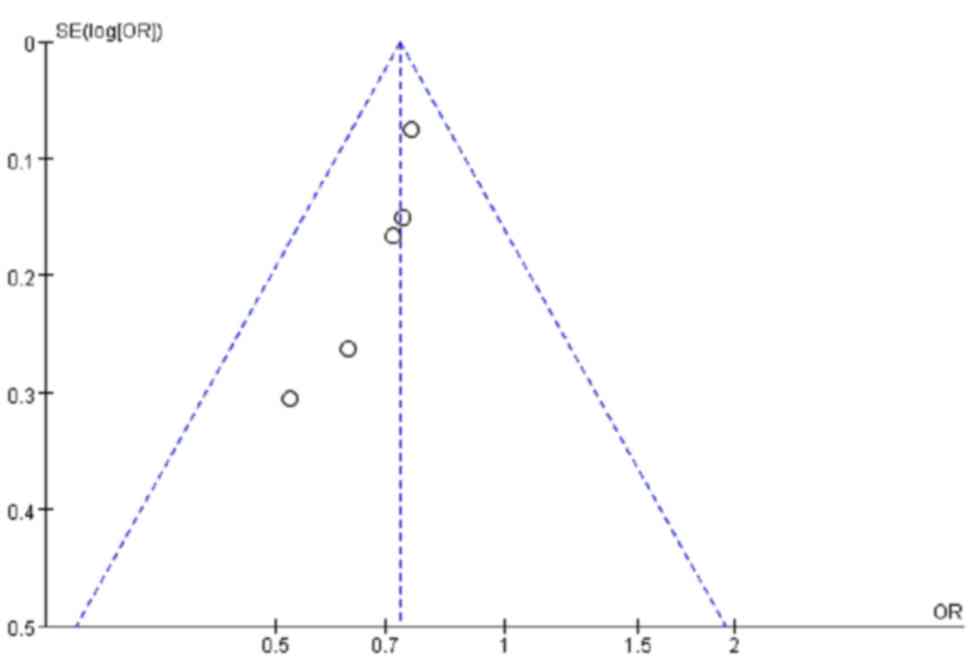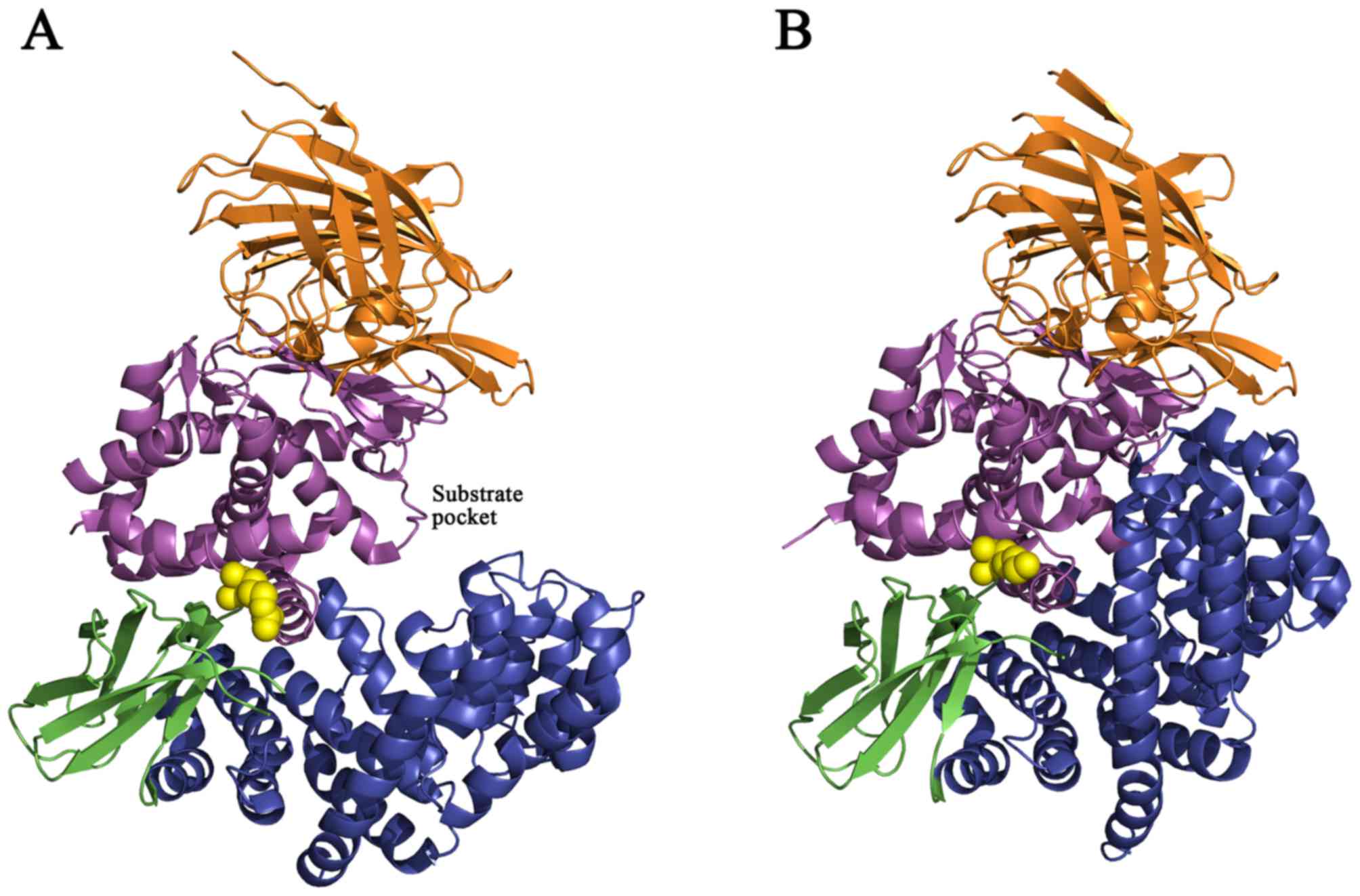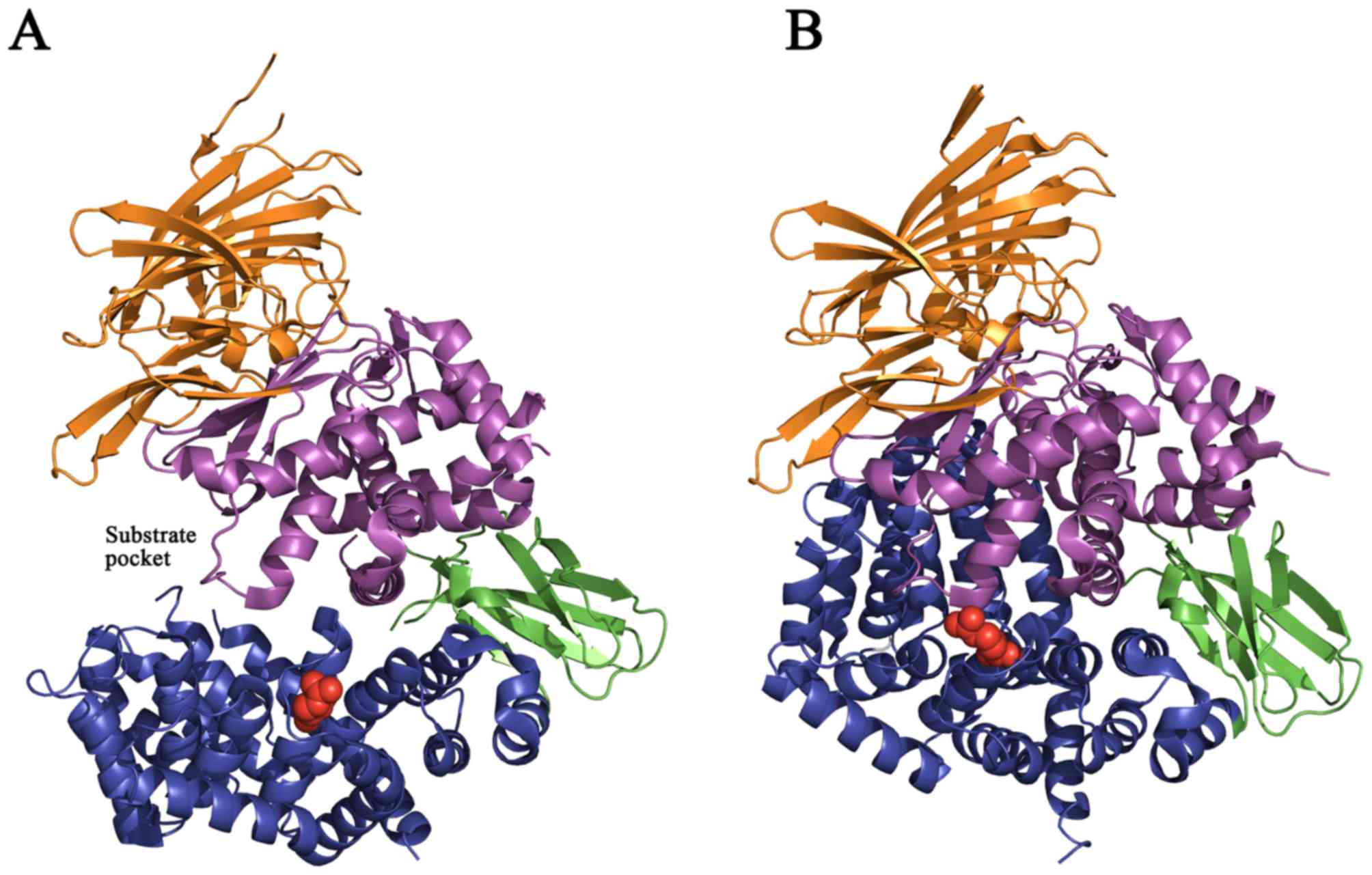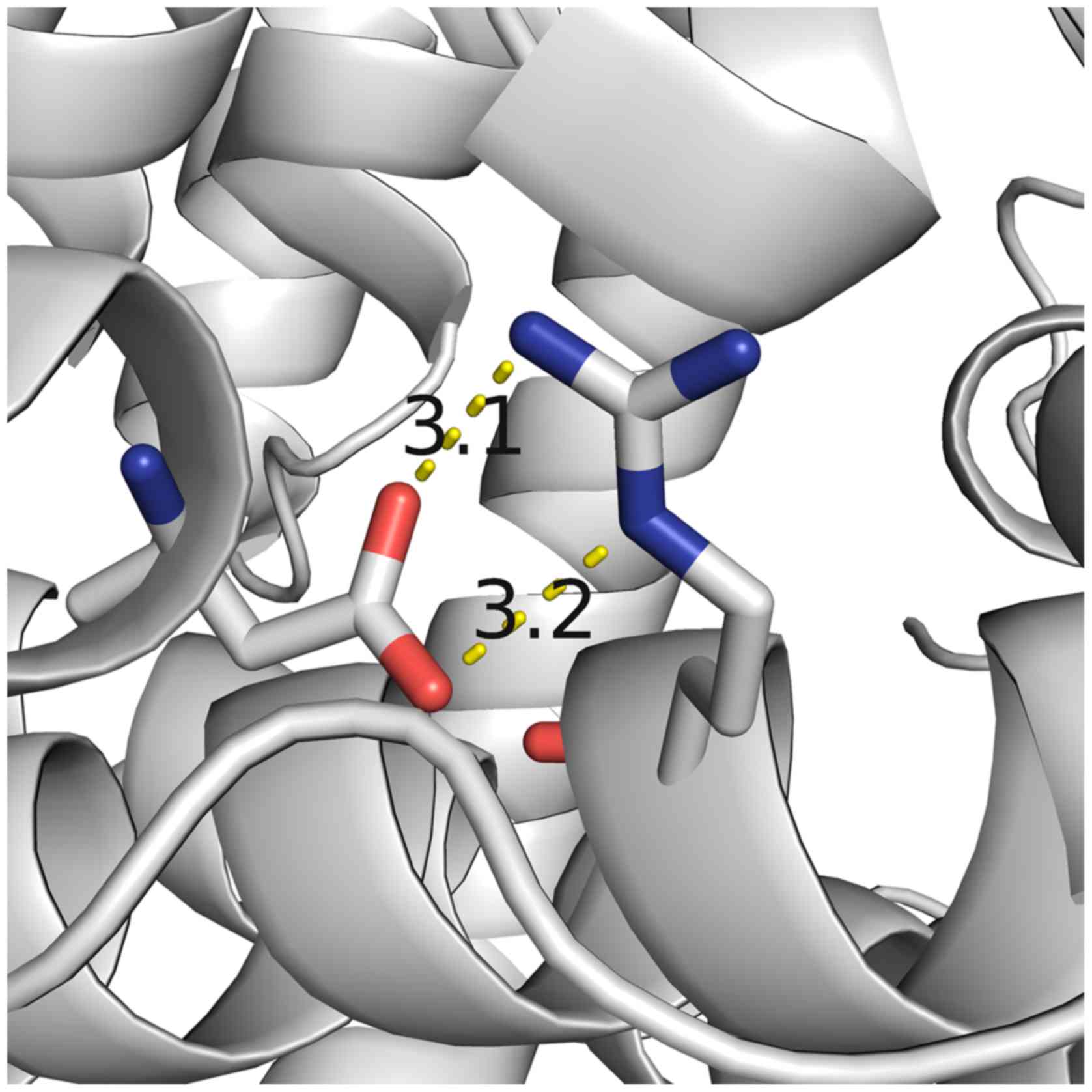|
1
|
Lin Z, Bei JX, Shen M, Li Q, Liao Z, Zhang
Y, Lv Q, Wei Q, Low HQ, Guo YM, et al: A genome-wide association
study in Han Chinese identifies new susceptibility loci for
ankylosing spondylitis. Nat Genet. 44:73–77. 2011. View Article : Google Scholar : PubMed/NCBI
|
|
2
|
Kadi A, Izac B, Said-Nahal R, Leboime A,
Van Praet L, de Vlam K, Elewaut D, Chiocchia G and Breban M:
Investigating the genetic association between ERAP1 and
spondyloarthritis. Ann Rheum Dis. 72:608–613. 2013. View Article : Google Scholar : PubMed/NCBI
|
|
3
|
Braun J, Bollow M, Remlinger G, Eggens U,
Rudwaleit M, Distler A and Sieper J: Prevalence of
spondylarthropathies in HLA-B27 positive and negative blood donors.
Arthritis Rheum. 41:58–67. 1998. View Article : Google Scholar : PubMed/NCBI
|
|
4
|
Cai G, Xin L, Wang L, Fan D, Liu L, Hu Y,
Ding N, Xu S, Xia G, Jin X, et al: Associations between ERAP1
polymorphisms and ankylosing spondylitis susceptibility: An updated
meta-analysis. Mod Rheumatol. 25:453–461. 2015. View Article : Google Scholar : PubMed/NCBI
|
|
5
|
Brewerton DA, Hart FD, Nicholls A, Caffrey
M, James DC and Sturrock RD: Ankylosing spondylitis and HL-A 27.
Lancet. 1:904–907. 1973. View Article : Google Scholar : PubMed/NCBI
|
|
6
|
van der Linden S, Valkenburg H and Cats A:
The risk of developing ankylosing spondylitis in HLA-B27 positive
individuals: A family and population study. Br J Rheumatol. 22 4
Suppl 2:S18–S19. 1983. View Article : Google Scholar
|
|
7
|
Wellcome Trust Case Control Consortium1;
Australo-Anglo-American Spondylitis Consortium (TASC), ; Burton PR,
Clayton DG, Cardon LR, Craddock N, Deloukas P, Duncanson A,
Kwiatkowski DP, McCarthy MI, et al: Association scan of 14,500
nonsynonymous SNPs in four diseases identifies autoimmunity
variants. Nat Genet. 39:1329–1337. 2007. View Article : Google Scholar : PubMed/NCBI
|
|
8
|
Maksymowych WP, Inman RD, Gladman DD,
Reeve JP, Pope A and Rahman P: Association of a specific
ERAP1/ARTS1 haplotype with disease susceptibility in ankylosing
spondylitis. Arthritis Rheum. 60:1317–1323. 2009. View Article : Google Scholar : PubMed/NCBI
|
|
9
|
Zvyagin IV, Dorodnykh VY, Mamedov IZ,
Staroverov DB, Bochkova AG, Rebrikov DV and Lebedev YB: Association
of ERAP1 allelic variants with risk of ankylosing spondylitis. Acta
Naturae. 2:72–77. 2010.PubMed/NCBI
|
|
10
|
Pazár B, Sáfrány E, Gergely P, Szántó S,
Szekanecz Z and Poór G: Association of ARTS1 gene polymorphisms
with ankylosing spondylitis in the Hungarian population: The
rs27044 variant is associated with HLA-B*2705 subtype in Hungarian
patients with ankylosing spondylitis. J Rheumatol. 37:379–384.
2010. View Article : Google Scholar : PubMed/NCBI
|
|
11
|
Szczypiorska M, Sánchez A, Bartolomé N,
Arteta D, Sanz J, Brito E, Fernández P, Collantes E, Martínez A,
Tejedor D, et al: ERAP1 polymorphisms and haplotypes are associated
with ankylosing spondylitis susceptibility and functional severity
in a Spanish population. Rheumatology (Oxford). 50:1969–1975. 2011.
View Article : Google Scholar : PubMed/NCBI
|
|
12
|
Bang SY, Kim TH, Lee B, Kwon E, Choi SH,
Lee KS, Shim SC, Pope A, Rahman P, Reveille JD and Inman RD:
Genetic studies of ankylosing spondylitis in Koreans confirm
associations with ERAP1 and 2p15 reported in white patients. J
Rheumatol. 38:322–324. 2011. View Article : Google Scholar : PubMed/NCBI
|
|
13
|
Mahmoudi M, Jamshidi AR, Amirzargar AA,
Farhadi E, Nourijelyani K, Fallahi S, Oraei M, Noori S and Nicknam
MH: Association between endoplasmic reticulum aminopeptidase-1
(ERAP-1) and susceptibility to ankylosing spondylitis in Iran. Iran
J Allergy Asthma Immunol. 11:294–300. 2012.PubMed/NCBI
|
|
14
|
Chen C and Zhang X: ERAP1 variants are
associated with ankylosing spondylitis in East Asian population: A
new Chinese case-control study and meta-analysis of published
series. Int J Immunogenet. 42:168–173. 2015. View Article : Google Scholar : PubMed/NCBI
|
|
15
|
Wang J, Li H, Wang J and Gao X:
Association between ERAP1 gene polymorphisms and ankylosing
spondylitis susceptibility in Han population. Int J Clin Exp
Pathol. 8:11641–11646. 2015.PubMed/NCBI
|
|
16
|
Wu W, Ding Y, Chen Y, Hua Z, Liu H, Wang H
and Jiao G: Susceptibility to ankylosing spondylitis: Evidence for
the role of ERAP1, TGFb1 and TLR9 gene polymorphisms. Rheumatol
Int. 32:2517–2521. 2012. View Article : Google Scholar : PubMed/NCBI
|
|
17
|
Cherciu M, Popa LO, Bojinca M, Dutescu MI,
Bojinca V, Bara C and Popa OM: Functional variants of ERAP1 gene
are associated with HLA-B27 positive spondyloarthritis. Tissue
Antigens. 82:192–196. 2013. View Article : Google Scholar : PubMed/NCBI
|
|
18
|
Cinar M, Akar H, Yilmaz S, Simsek I,
Karkucak M, Sagkan RI, Pekel A, Erdem H, Avci IY, Acikel C, et al:
A polymorphism in ERAP1 is associated with susceptibility to
ankylosing spondylitis in a Turkish population. Rheumatol Int.
33:2851–2858. 2013. View Article : Google Scholar : PubMed/NCBI
|
|
19
|
Zhang Z, Dai D, Yu K, Yuan F, Jin J, Ding
L, Hao Y, Liang F, Liu N, Zhao X, et al: Association of HLA-B27 and
ERAP1 with ankylosing spondylitis susceptibility in Beijing Han
Chinese. Tissue Antigens. 83:324–329. 2014. View Article : Google Scholar : PubMed/NCBI
|
|
20
|
Davidson SI, Wu X, Liu Y, Wei M, Danoy PA,
Thomas G, Cai Q, Sun L, Duncan E, Wang N, et al: Association of
ERAP1, but not IL23R, with ankylosing spondylitis in a Han Chinese
population. Arthritis Rheum. 60:3263–3268. 2009. View Article : Google Scholar : PubMed/NCBI
|
|
21
|
Chapman K, Takahashi A, Meulenbelt I,
Watson C, Rodriguez-Lopez J, Egli R, Tsezou A, Malizos KN,
Kloppenburg M, Shi D, et al: A meta-analysis of European and Asian
cohorts reveals a global role of a functional SNP in the 5UTR of
GDF5 with osteoarthritis susceptibility. Hum Mol Genet.
17:1497–1504. 2008. View Article : Google Scholar : PubMed/NCBI
|
|
22
|
Zhang R, Yao J, Xu P, Ji B, Luck JV, Chin
B, Lu S, Kelsoe JR and Ma J: A comprehensive meta-analysis of
association between genetic variants of GDF5 and osteoarthritis of
the knee, hip and hand. Inflamm Res. 64:405–414. 2015. View Article : Google Scholar : PubMed/NCBI
|
|
23
|
Xu M, St Clair D and He L: Testing for
genetic association between the ZDHHC8 gene locus and
susceptibility to schizophrenia: An integrated analysis of multiple
datasets. Am J Med Genet B Neuropsychiatr Genet. 153B:1–1275. 2010.
View Article : Google Scholar : PubMed/NCBI
|
|
24
|
Nie F, Wang X, Zhao P, Yang H, Zhu W, Zhao
Y, Chen B, Valenzuela RK, Zhang R, Gallitano AL and Ma J: Genetic
analysis of SNPs in CACNA1C and ANK3 gene with schizophrenia: A
comprehensive meta-analysis. Am J Med Genet B Neuropsychiatr Genet.
168:637–648. 2015. View Article : Google Scholar : PubMed/NCBI
|
|
25
|
Adzhubei IA, Schmidt S, Peshkin L,
Ramensky VE, Gerasimova A, Bork P, Kondrashov AS and Sunyaev SR: A
method and server for predicting damaging missense mutations.
Nature methods. 7:248–249. 2010. View Article : Google Scholar : PubMed/NCBI
|
|
26
|
Berman HM, Westbrook J, Feng Z, Gilliland
G, Bhat TN, Weissig H, Shindyalov IN and Bourne PE: The protein
data bank. Nucleic Acids Res. 28:235–242. 2000. View Article : Google Scholar : PubMed/NCBI
|
|
27
|
Pimentel-Santos FM, Ligeiro D, Matos M,
Mourão AF, Sousa E, Pinto P, Ribeiro A, Sousa M, Barcelos A,
Godinho F, et al: Association of IL23R and ERAP1 genes with
ankylosing spondylitis in a Portuguese population. Clin Exp
Rheumatol. 27:800–806. 2009.PubMed/NCBI
|
|
28
|
Harvey D, Pointon JJ, Evans DM, Karaderi
T, Farrar C, Appleton LH, Sturrock RD, Stone MA, Oppermann U, Brown
MA and Wordsworth BP: Investigating the genetic association between
ERAP1 and ankylosing spondylitis. Hum Mol Genet. 18:4204–4212.
2009. View Article : Google Scholar : PubMed/NCBI
|
|
29
|
Choi CB, Kim TH, Jun JB, Lee HS, Shim SC,
Lee B, Pope A, Uddin M, Rahman P and Inman RD: ARTS1 polymorphisms
are associated with ankylosing spondylitis in Koreans. Ann Rheum
Dis. 69:582–584. 2010. View Article : Google Scholar : PubMed/NCBI
|
|
30
|
Australo-Anglo-American Spondyloarthritis
Consortium (TASC), ; Reveille JD, Sims AM, Danoy P, Evans DM, Leo
P, Pointon JJ, Jin R, Zhou X, Bradbury LA, et al: Genome-wide
association study of ankylosing spondylitis identifies non-MHC
susceptibility loci. Nat Genet. 42:123–127. 2010. View Article : Google Scholar : PubMed/NCBI
|
|
31
|
Li C, Lin Z, Xie Y, Guo Z, Huang J, Wei Q,
Li QX, Wang X, Cao S, Liao Z, et al: ERAP1 is associated with
ankylosing spondylitis in Han Chinese. J Rheumatol. 38:317–321.
2011. View Article : Google Scholar : PubMed/NCBI
|
|
32
|
Wang CM, Ho HH, Chang SW, Wu YJ, Lin JC,
Chang PY, Wu J and Chen JY: ERAP1 genetic variations associated
with HLA-B27 interaction and disease severity of syndesmophytes
formation in Taiwanese ankylosing spondylitis. Arthritis Res Ther.
14:R1252012. View
Article : Google Scholar : PubMed/NCBI
|
|
33
|
Liu Y, Li L, Shi S, Chen X, Gao J, Zhu M
and Yuan J: Association study of ankylosing spondylitis and
polymorphisms in ERAP1 gene in Zhejiang Han Chinese population.
Rheumatol Int. 36:243–248. 2016. View Article : Google Scholar : PubMed/NCBI
|
|
34
|
Evans DM, Spencer CC, Pointon JJ, Su Z,
Harvey D, Kochan G, Oppermann U, Dilthey A, Pirinen M, Stone MA, et
al: Interaction between ERAP1 and HLA-B27 in ankylosing spondylitis
implicates peptide handling in the mechanism for HLA-B27 in disease
susceptibility. Nat Genet. 43:761–767. 2011. View Article : Google Scholar : PubMed/NCBI
|
|
35
|
Nguyen TT, Chang SC, Evnouchidou I, York
IA, Zikos C, Rock KL, Goldberg AL, Stratikos E and Stern LJ:
Structural basis for antigenic peptide precursor processing by the
endoplasmic reticulum aminopeptidase ERAP1. Nat Struct Mol Biol.
18:604–613. 2011. View Article : Google Scholar : PubMed/NCBI
|
|
36
|
Kochan G, Krojer T, Harvey D, Fischer R,
Chen L, Vollmar M, von Delft F, Kavanagh KL, Brown MA, Bowness P,
et al: Crystal structures of the endoplasmic reticulum
aminopeptidase-1 (ERAP1) reveal the molecular basis for N-terminal
peptide trimming. Proc Natl Acad Sci USA. 108:7745–7750. 2011;
View Article : Google Scholar : PubMed/NCBI
|
|
37
|
Goto Y, Hattori A, Ishii Y and Tsujimoto
M: Reduced activity of the hypertension-associated Lys528Arg mutant
of human adipocyte-derived leucine aminopeptidase
(A-LAP)/ER-aminopeptidase-1. FEBS Lett. 580:1833–1838. 2006.
View Article : Google Scholar : PubMed/NCBI
|
|
38
|
Robinson PC and Brown MA: Genetics of
ankylosing spondylitis. Mol Immunol. 57:2–11. 2014. View Article : Google Scholar : PubMed/NCBI
|
|
39
|
Lee YH, Choi SJ, Ji JD and Song GG:
Associations between ERAP1 polymorphisms and ankylosing spondylitis
susceptibility: A meta-analysis. Inflamm Res. 60:999–1003. 2011.
View Article : Google Scholar : PubMed/NCBI
|
|
40
|
Chen R, Yao L, Meng T and Xu W: The
association between seven ERAP1 polymorphisms and ankylosing
spondylitis susceptibility: A meta-analysis involving 8,530 cases
and 12,449 controls. Rheumatol Int. 32:909–914. 2012. View Article : Google Scholar : PubMed/NCBI
|
|
41
|
Yousaf N, Low WY, Onipinla A, Mein C,
Caulfield M, Munroe PB and Chernajovsky Y: Differences between
disease-associated endoplasmic reticulum aminopeptidase 1 (ERAP1)
isoforms in cellular expression, interactions with tumour necrosis
factor receptor 1 (TNF-R1) and regulation by cytokines. Clin Exp
Immunol. 180:289–304. 2015. View Article : Google Scholar : PubMed/NCBI
|
|
42
|
Reeves E, Elliott T, James E and Edwards
CJ: ERAP1 in the pathogenesis of ankylosing spondylitis. Immunol
Res. 60:257–269. 2014. View Article : Google Scholar : PubMed/NCBI
|
|
43
|
Haroon N: Endoplasmic reticulum
aminopeptidase 1 and interleukin-23 receptor in ankylosing
spondylitis. Curr Rheumatol Rep. 14:383–389. 2012. View Article : Google Scholar : PubMed/NCBI
|
|
44
|
Evnouchidou I, Kamal RP, Seregin SS, Goto
Y, Tsujimoto M, Hattori A, Voulgari PV, Drosos AA, Amalfitano A,
York IA and Stratikos E: Cutting Edge: Coding single nucleotide
polymorphisms of endoplasmic reticulum aminopeptidase 1 can affect
antigenic peptide generation in vitro by influencing basic
enzymatic properties of the enzyme. J Immunol. 186:1909–1913. 2011.
View Article : Google Scholar : PubMed/NCBI
|














